ESTHER HI'ILANI CANDARI
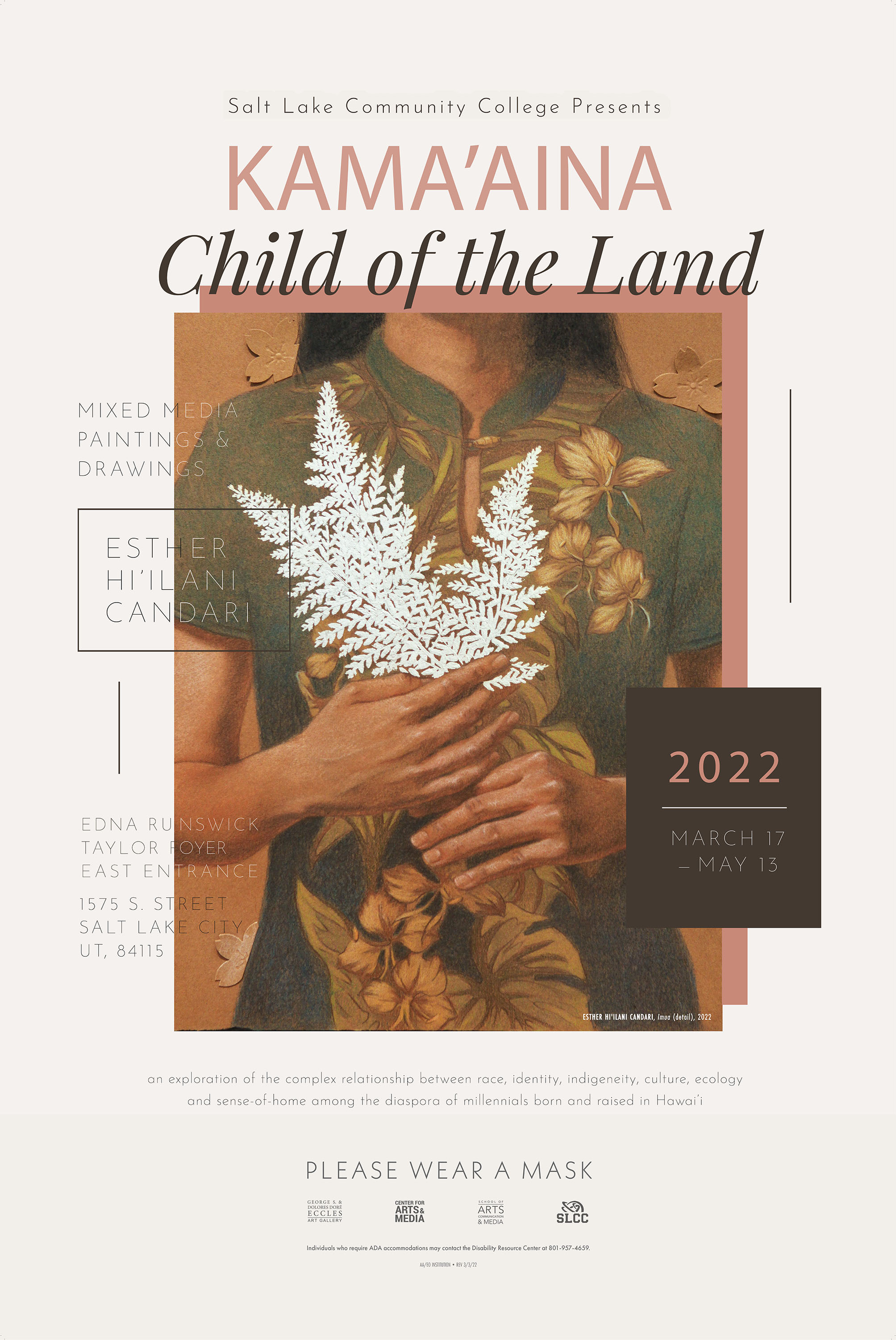
ESTHER HI’ILANI CANDARI
“Kama’aina: Child of the Land”
Mixed Media, Paintings & Drawings
March 17 – May 13, 2022
An exploration of the complex relationship between race, identity, indigeneity, culture, ecology, and a sense-of-home among the diaspora of millennials born and raised in Hawai’i.
Edna Runswick Taylor Foyer
East Entrance, South City Campus
1575 S State Street
Salt Lake City, UT 84115
VIEWING HOURS
Monday-Thursday, 7 a.m.-10 p.m.
Friday, 7 a.m.-4:30 p.m.
Closed Saturday & Sunday
SLCC strongly encourages everyone, regardless of vaccination or immunity status,to wear a proper face covering while on campus or while attending college events.
Individuals who require ADA accommodations may contact the Disability Resource Center at 801-957-4659.
Artist Statements
Kuleana
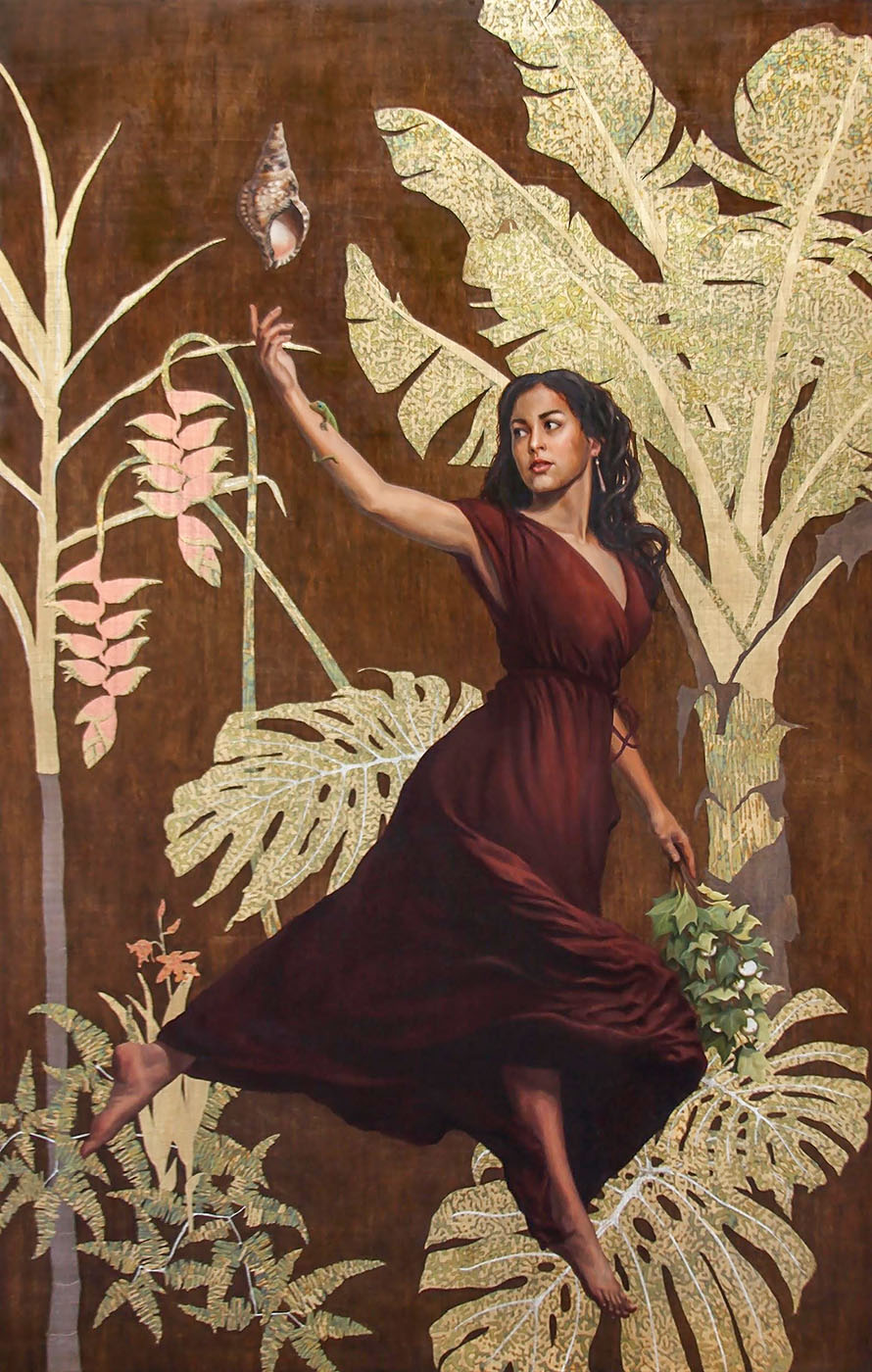
In ‘ōlelo Hawai’i, the native language of my home state, there is a unique word that very roughly translates to responsibility, “kuleana.” Like many words in Hawai’ian, it has multiple complex and contextual meanings. The meaning that I was raised with is akin to the scriptural use of the word “stewardship.” Kuleana to me means a sacred duty that is embedded in the essence of my identity as an individual and as part of a community. It refers to that which I am entrusted to care for, nourish, protect and share. But it is more than simply a categorization of things and actions, it is a mindset and lifestyle. It is simultaneously a noun and a verb, and it is the most accurate way to describe the way I view my purpose as an artist.
A multiplicity of facets in my life taught me from an early age to recognize and live with gratitude for physical, spiritual and emotional blessings. My upbringing ignited in me the desire to use whatever means I might be given to alleviate and enlighten. The power art has to directly bring emotional and spiritual enlightenment is what drew me to become an artist. As I have developed my identity and skills as an artist, I have come to understand, oftentimes through deeply personal and spiritual experiences, that my kuleana is to be a conduit for divine light and truth. It is my kuleana to enlighten individuals to a greater sense of their own self-worth and purpose, and to enlighten the communities in which I function with a more inclusive and empathetic view of the individuals and groups within and without their circles.
Alternately, this piece also subtly hints at the underlying tension I have always felt as a non-indigenous individual living on an island with a sordid history of colonialism. As a mixed-race individual, Hawai’i is the only place I have ever felt I truly belonged, but have somehow never felt I fully belonged. This veiled conflict is reflected by the species of plants in the background, all of them familiar to both residents and visitors to the island, but none of them indigenous.
A portion of the proceeds from this piece will be donated to education scholarships in Hawai’i.
Imua
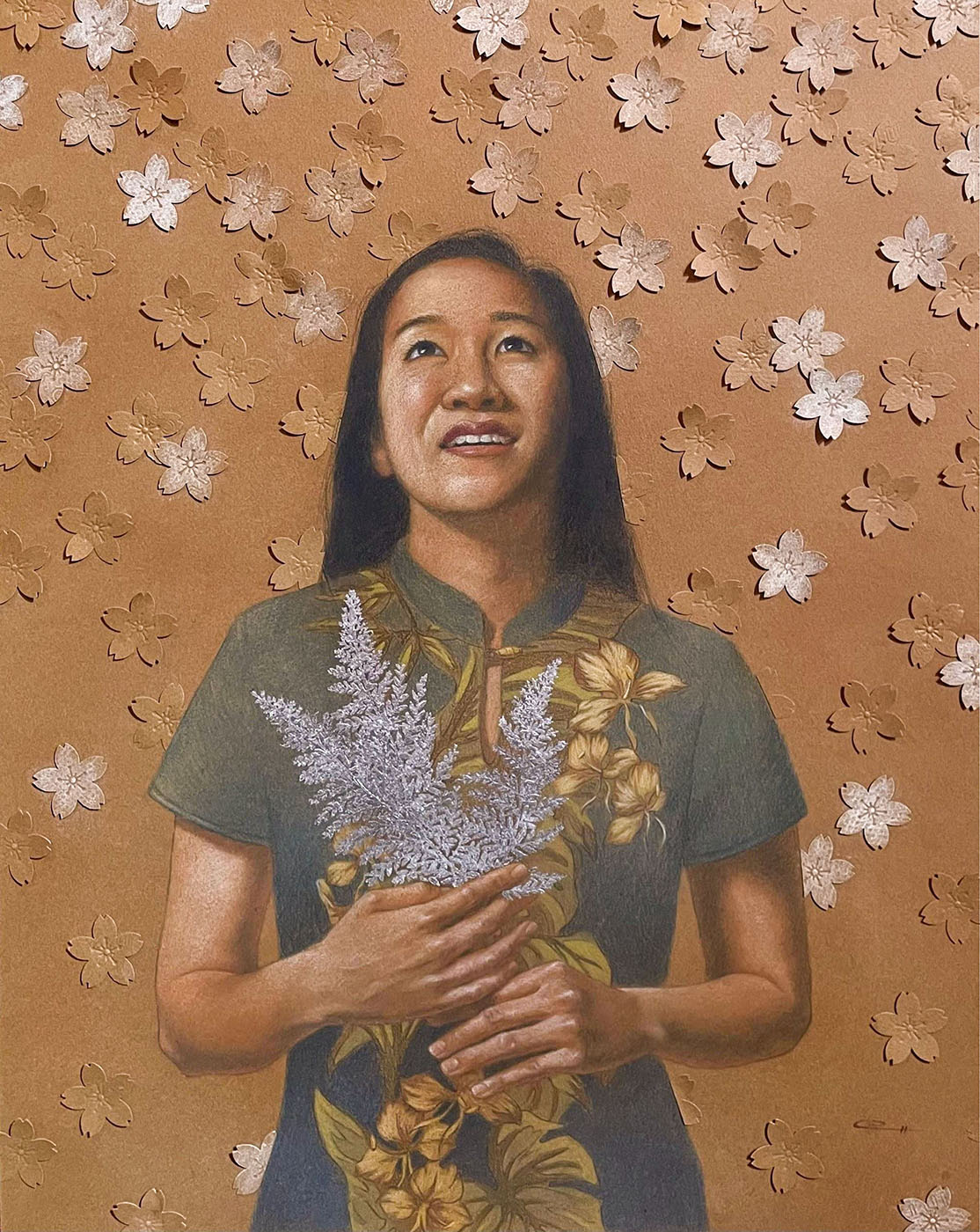
One of the integral and beautiful aspects of modern culture in Hawai’i is the acceptance and celebration of mixed-race experience and identity. You are rarely asked to ‘be’ one thing or another but instead encouraged to bask in the rich breadth of tradition, perspective and culture provided by your multifaceted identity. Melanie, the subject of this piece, models this beautifully with her children, who are being raised with an understanding and respect for their various Asian and indigenous heritage.
Like many kama’aina and kanaka of my generation, however, Melanie is raising her children thousands of miles from the islands that taught her these lessons. She plans to return someday, hopefully soon, but that planning cannot be casual. As the state with the highest cost of living, 93% higher than average, Hawai’i is not a home that is easy to return to. For millennials, who often must move away for college and who now have young families, it requires years of planning and saving to ensure a stable transition to a very modest lifestyle in the islands. Those who choose to press forward, to imua, and return are often driven by a deep sense of connection to the place and a desire to return and give back to the land that nourished their childhood.
A portion of the proceeds from this piece will be donated to affordable housing efforts in Hawai’i.
Flowers from Fire
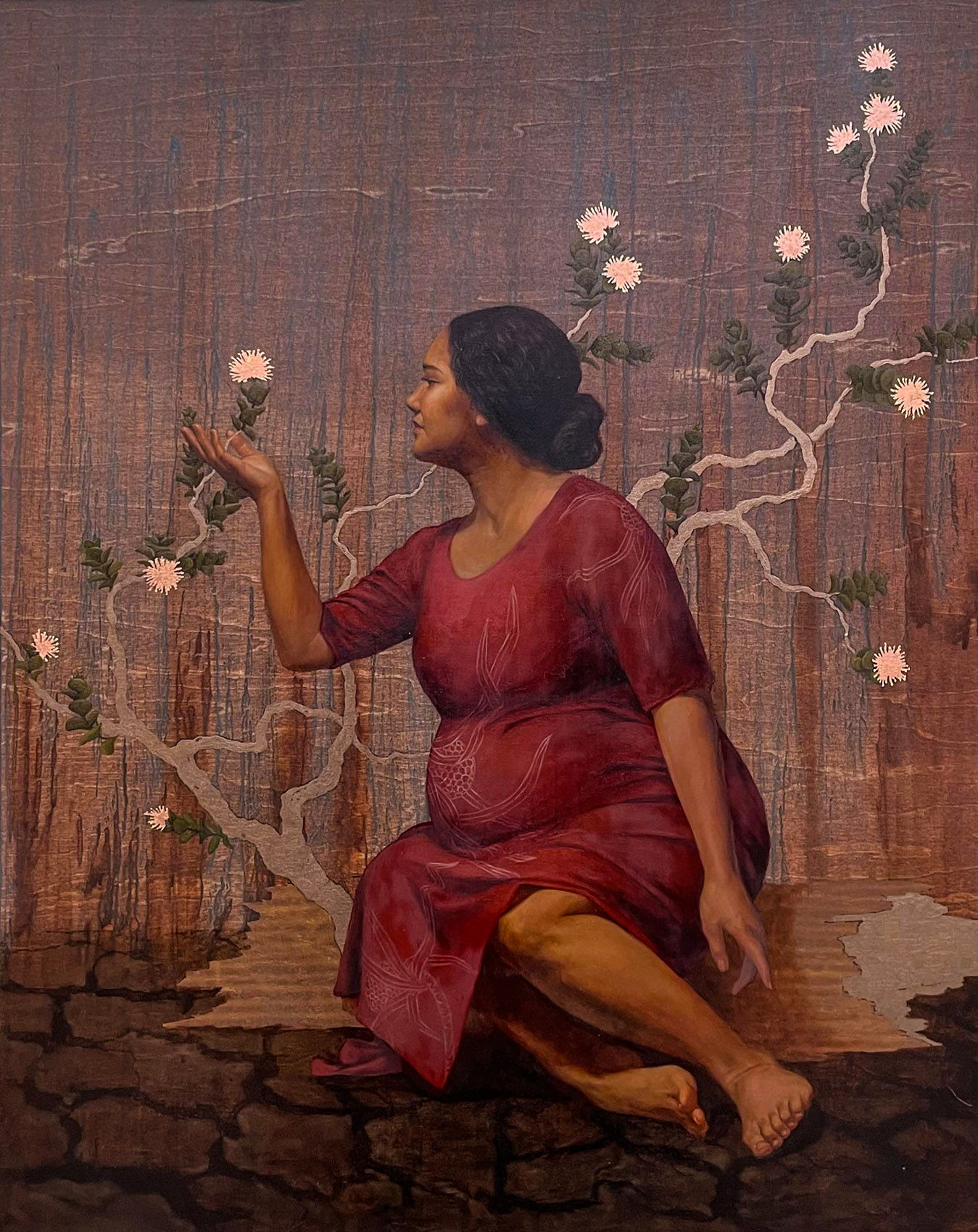
The ˜ōhi˜a lehua plant is a common sight across lava fields and up the steep stony cliffs of mountain ranges. It is known for its tenacity and ability to grow out of sheer rock. Often among the first plants to spring up after a lava flow cools, it has symbolic and mythological connections to Pele, the goddess of volcanoes, rain, love and fidelity.
Despite the seemingly idyllic atmosphere of the islands, the political and economic challenges in Hawai’i can often create rocky ground for individuals and families, and yet they fight and flourish. The culture and soul of the people continues to blossom through the cracks of colonialism, government corruption, white supremacy and environmental damage. We must decry the destruction, but also celebrate the resilience.
A portion of the proceeds from this piece will be donated to ecological preservation efforts in Hawai’i.
Midnight Rains in Manoa
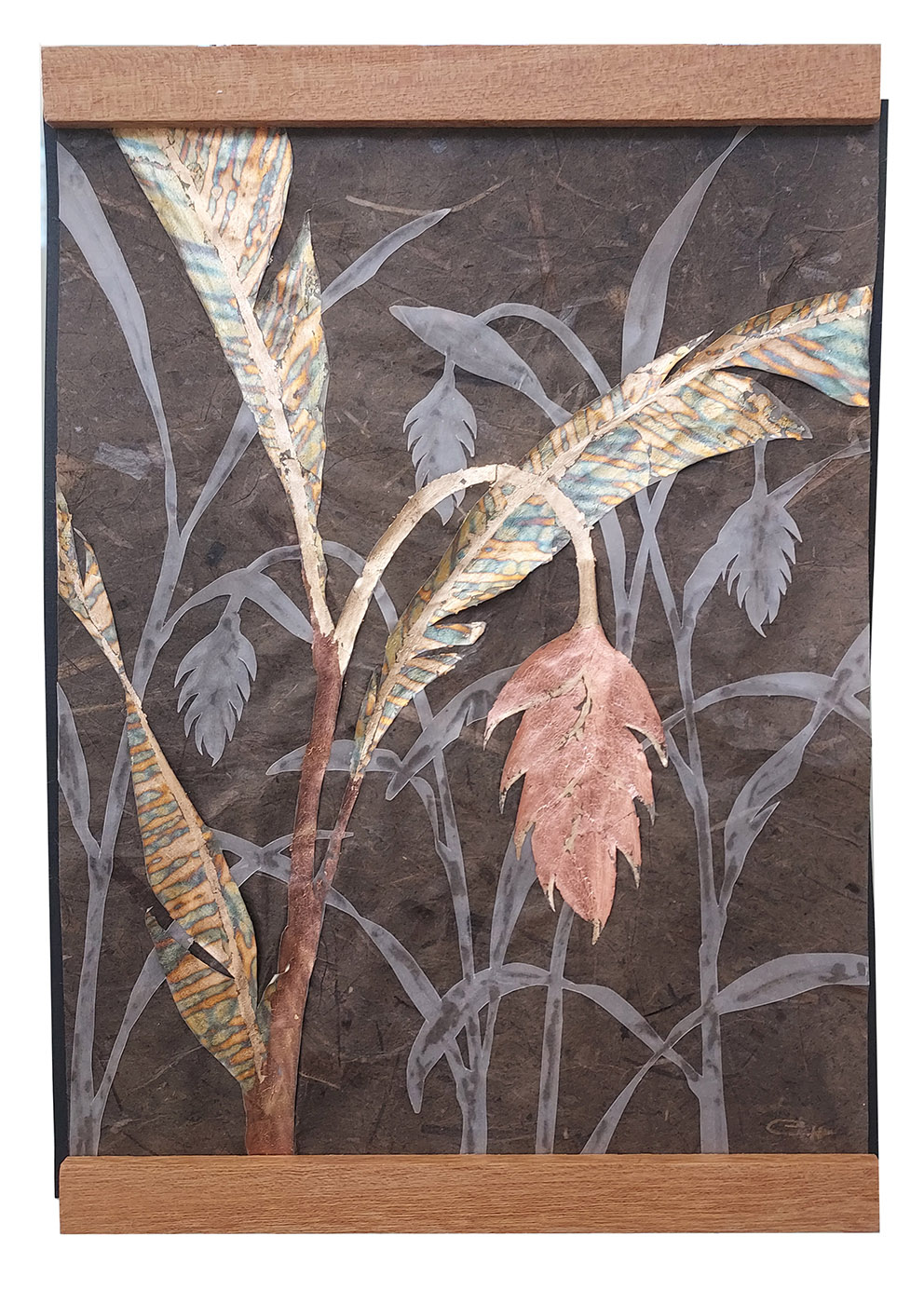
One of my favorite memories growing up in Hawai’i was lying in my bed at night and listening to the rain sweep down the valley, bringing with it the fresh smell of jungle flowers. Recently, on a trip back home, we went hiking and the sunset approached faster than expected. We walked the last quarter mile through the dripping trees with a flashlight in the near pitch black.
Somehow, I felt perfectly safe, as if I could just close my eyes and I would be a young child again, half-asleep in my bed.
Ti Leaf Memories
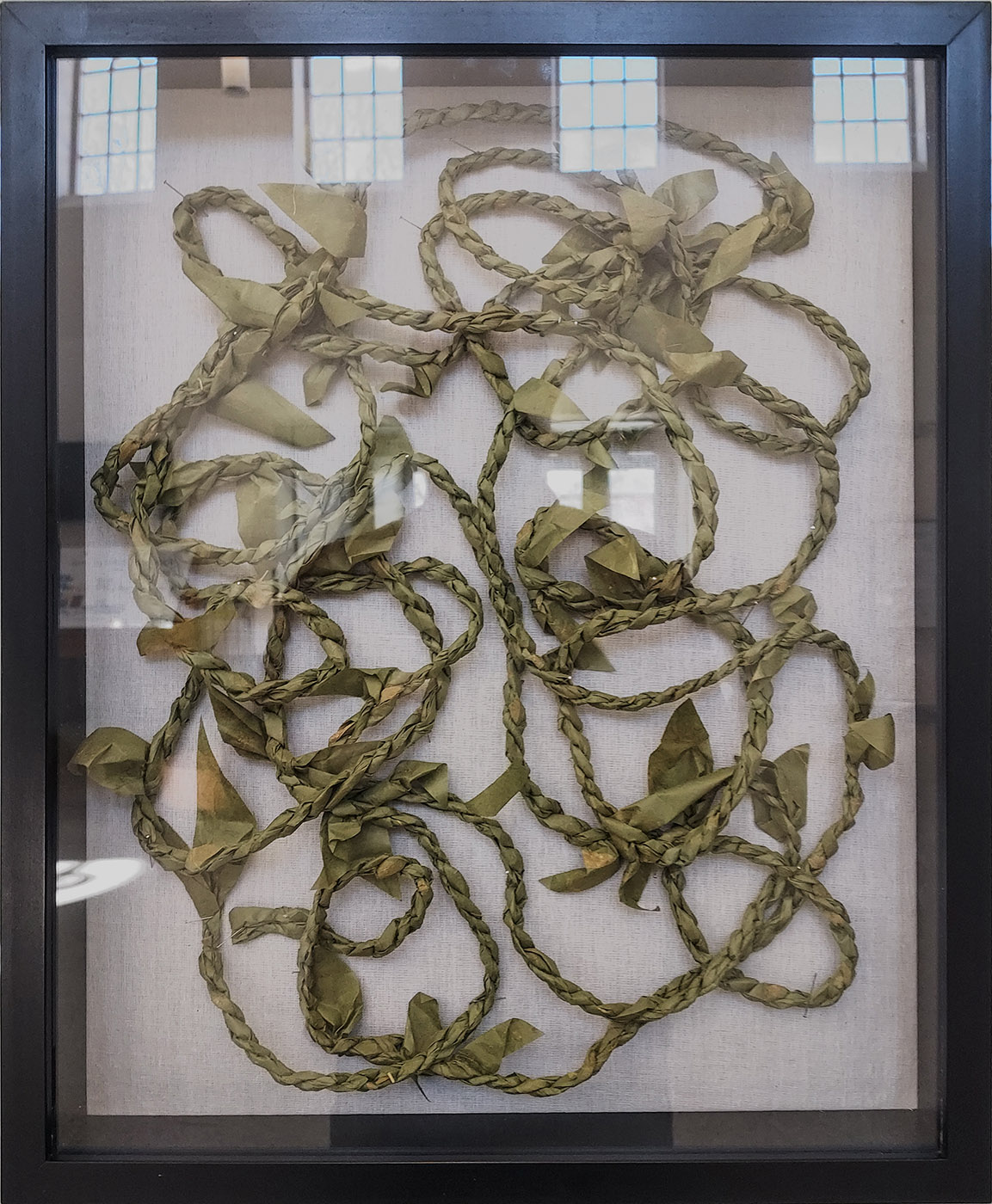
Tileaf leis are a common sight at any celebration in Hawai’i. Weddings, promotions, birthday parties, funerals, religious ceremonies and more. I made them countless times as far back as I can remember. The last time I made one was for my husband on our wedding day. The leaves themselves are a symbol of respect, blessings and divine protection. This piece is made from natural paper strips instead of the traditional ti leaves, because that is all I have access to so far from home. It is a reminder of how I bind myself to my memories and traditions of my youth with what materials I can.
A portion of the proceeds from this piece will be donated to cultural education efforts in Hawai’i.
Quilting Culture
(Clockwise from top-left: Dandelion, Aspen, Prickly Pear, Yucca.)
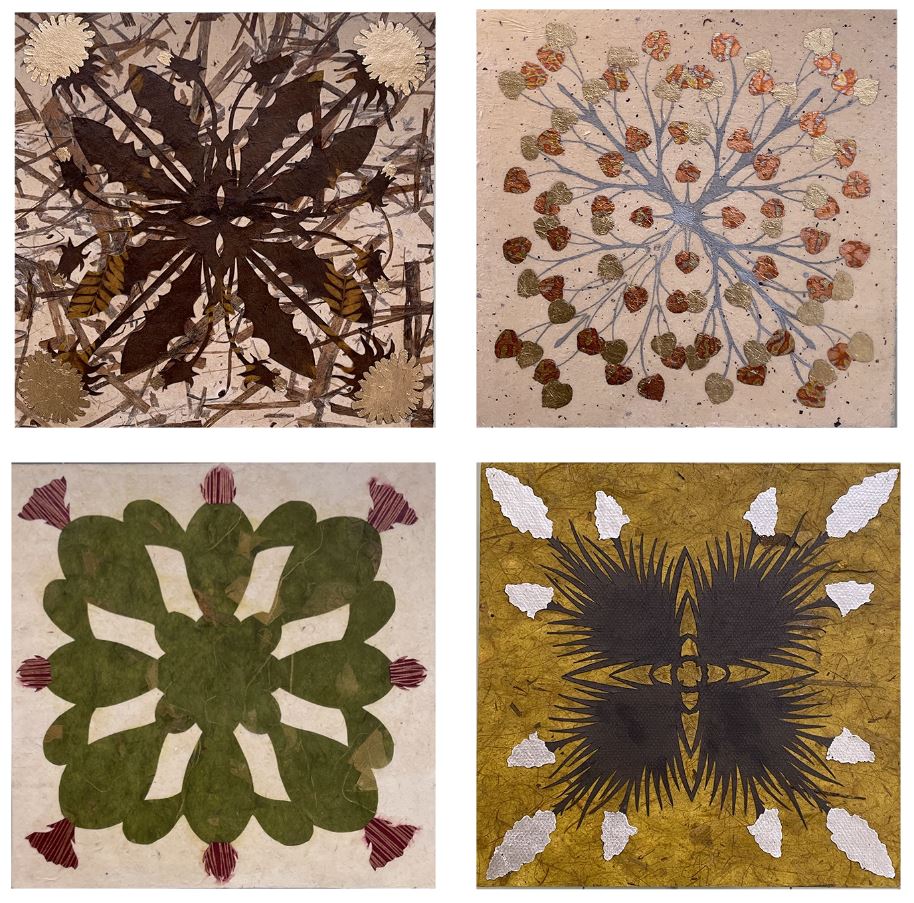
One of the most well-known artistic traditions in Hawai’i is an applique style of quilting that utilizes stylized and radially symmetrical plant, and sometimes animal, designs. This series asks the question, “How do you adapt your cultural traditions when you no longer have access to the land and necessary materials?” Each of these squares was designed using the traditional methods but they feature plants common to the mountain west.
A portion of the proceeds from this piece will be donated to Polynesian cultural education efforts in Utah.